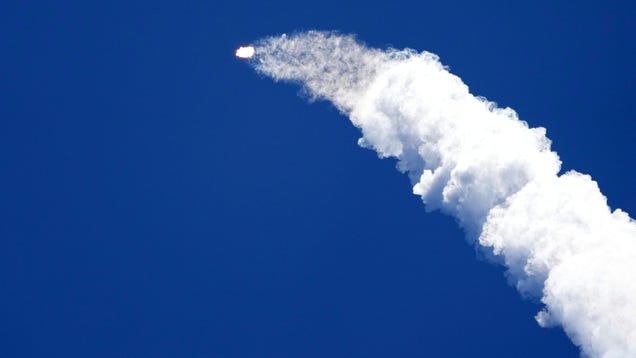It’s getting awfully crowded in low Earth orbit with more than 4,000 Starlink satellites currently in orbit and thousands more that will soon make their way up there. SpaceX’s internet satellites often stand in the way of orbiting spacecraft, defunct satellites, or space junk, racking up 50,000 potentially dangerous approaches over the past four years.
A new report revealed that Starlink satellites had to make 25,000 collision avoidance maneuvers in the six-month period between December 1, 2022 to May 31, 2023, Space.com first reported. On average, that’s a whopping 137 collision avoidances performed by the Starlink satellites each day. Overall, SpaceX’s satellites have made a total of 50,000 collision avoidance maneuvers since the company began launching Starlinks to orbit in 2019, based on reports filed by SpaceX to the Federal Communications Commission (FCC).
The numbers show a steep rise in the number of potential collisions between Starlink satellites and other objects in low Earth orbit in six months, revealing a dangerous pattern of increased risk of collision as the number of Starlink satellites continues to grow.
As of today, there are 4,411 Starlink satellites in orbit, according to data gathered by Harvard-Smithsonian astrophysicist Jonathan McDowell. Elon Musk’s private space venture wants to launch 12,000 satellites over the next few years, and a whopping 42,000 in total.
That’s a lot of satellites, and those already in orbit are already causing enough trouble as it is. In 2019, the European Space Agency (ESA) was forced to move its Aeolus Earth observation satellite out of the way of a Starlink satellite to avoid collision. Later in 2021, China filed a complaint to the United Nations over having to swerve its space station out of the way to avoid collision with two Starlink satellites.
SpaceX had previously stated that it would move its Starlink satellites if there is a greater than 1 in 100,000 chance of a collision with a piece of orbital debris or another satellite. The satellites are also equipped with their own autonomous collision avoidance software, which forces them to move out of the way if another spacecraft comes too close.
The rocket company is looking to dominate low Earth orbit with the amount of satellites it plans on sending to space, increasing the risk of collision with other orbital objects. Although there haven’t been any accidents yet, the staggering number of collision avoidance maneuvers revealed by the recent FCC report is indicative of a rapidly growing threat.
